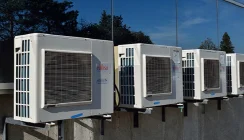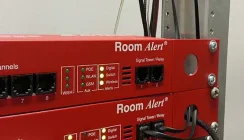Wireless Environment Monitoring At The Edge
Over the last 30 years we have seen data processing move from centralised datacentre locations with plug-in terminals to decentralised on-site server rooms operating standalone IT networks. The latest trend is to push the decentralised concept even further using Edge computing and connection to hyperscale datacentres via Cloud-based applications.
The reason behind many IT innovations is the need to improve to process larger amounts of data and at higher computational speeds. The more the data we need to process, the greater the issue of latency becomes.
The Internet of Things Connectivity
At the heart of this latest stage of computing evolution is the Internet of Things (IoT) which is forecast to see over 75 billion devices connected worldwide by 2025. This is a fivefold increase in ten years and a pace which is also exponential.
The IoT is about making the world a more and instantaneously connected place. Becoming a more connected world brings together new technologies and sensors all of which are collecting data which needs processing data, somewhere. Current projects are that by 2025 the amount of data that requires processing worldwide will be 10,000 times greater than today.
Examples include smart homes, wireless security systems, wearable fitness technologies and healthcare sensors, augmented and virtual reality, car navigation and auto-piloting systems, machine learning and autonomous industrial applications, traffic lights and cameras, renewable power and energy storage operations, home as well as the hundreds and thousands of mobile phone apps.
Edge Computing and Latency
Edge computing puts data processing and some storage nearer to the point of use to remove latency and improved speed of response. Whether the Edge is made up of micro data centres or server rooms, the application stores and processes data locally in real-time rather than pushing the data to a Cloud-based datacentre. Edge computing processes the data locally to deliver greater speed of service and to more local system users.
Alongside the IoT there are also infrastructure developments in terms of Edge computing and the latest 5G mobile phone system. 5G and wireless systems are key to the delivery of Edge infrastructure. Security of the entire system will require resilient power protection and communications with advances in cyber security and cryptology.
Electric Vehicle Usage
Drawing out electric vehicles and auto-piloting as emerging applications requiring Edge computing, the average EV can generate up to 4TB of data per day with camera sensors sending from 20-40MB of data per second to the Cloud. For an electric vehicle to travel safely down a 1mile section of a road require response-to-event actions within less than a millisecond. When you factor in hundreds of vehicles, pedestrians and cyclists, the problem becomes far more complex with a far higher degree of risk.
Electricity Grid Resilience
In the UK electricity generation and distribution is another example of an industry that is undergoing large scale change and one that will benefit from Edge computing. Smart meter roll outs are designed to help the National Grid match real-time demand to real-time generation and prevent down time. The UK electricity grid, like many now in Europe is now a combination of traditional generators and new ones including renewable solar and wind turbine farms, coupled with energy storage systems. The grid now has multiple injection points and a rising demand driven by a shift to electric vehicles, population growth and the UK’s datacentre industry
Environment Monitoring on The Edge
For Edge computing to be reliable, will require managed data centre and server room environments. Within a connected world these could be in remote and hostile environments. The need for environment monitoring, especially for temperature and humidity will be even greater and especially for remote computer applications. Just as Edge computing delivers real-time data, so must an environment management system. Within a city centre like London, roadside sensor cabinets connected via 5G to assist electric vehicles and ensure traffic flow, can see extreme temperatures that will require custom designs and enough cooling to prevent CPU meltdown and real-time environment monitoring.
A key question for environment monitoring systems is whether they themselves should use fixed RJ45 IP cables or be wireless when used in Edge computing applications. Wireless sensors are available with the best-performers cable of supporting up to 400 sensors on one gateway with a transmission range of up to 300m. Wireless environment monitors could be IoT enabled themselves to provide an additional and resilient level of monitoring for Edge applications.
Summary
High temperatures lead to electronic system failures. As Edge computing rolls out there will be a greater risk of temperature induced failures for remote applications of the technology. This risk will also increase due to the extremes of temperature brought about by climate change. Whilst today environment monitoring is sometimes a budget choice for some datacentre and server room facilities, Edge computing could see its automatic conclusion when designing a new micro data centre or custom cabinet.
For more information on Internet of Things connectivity statistic visit: https://www.statista.com/statistics/471264/iot-number-of-connected-devices-worldwide/


























